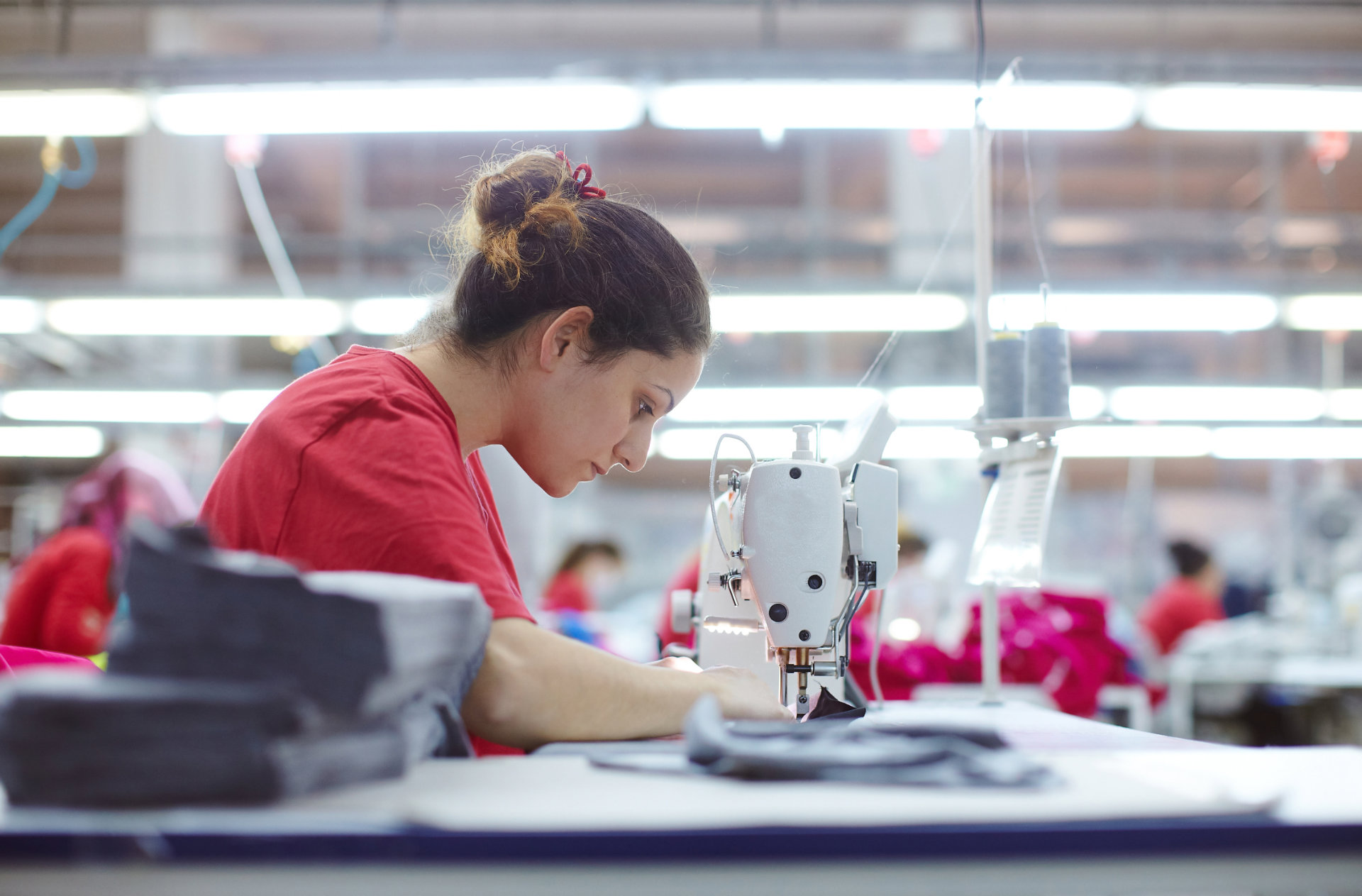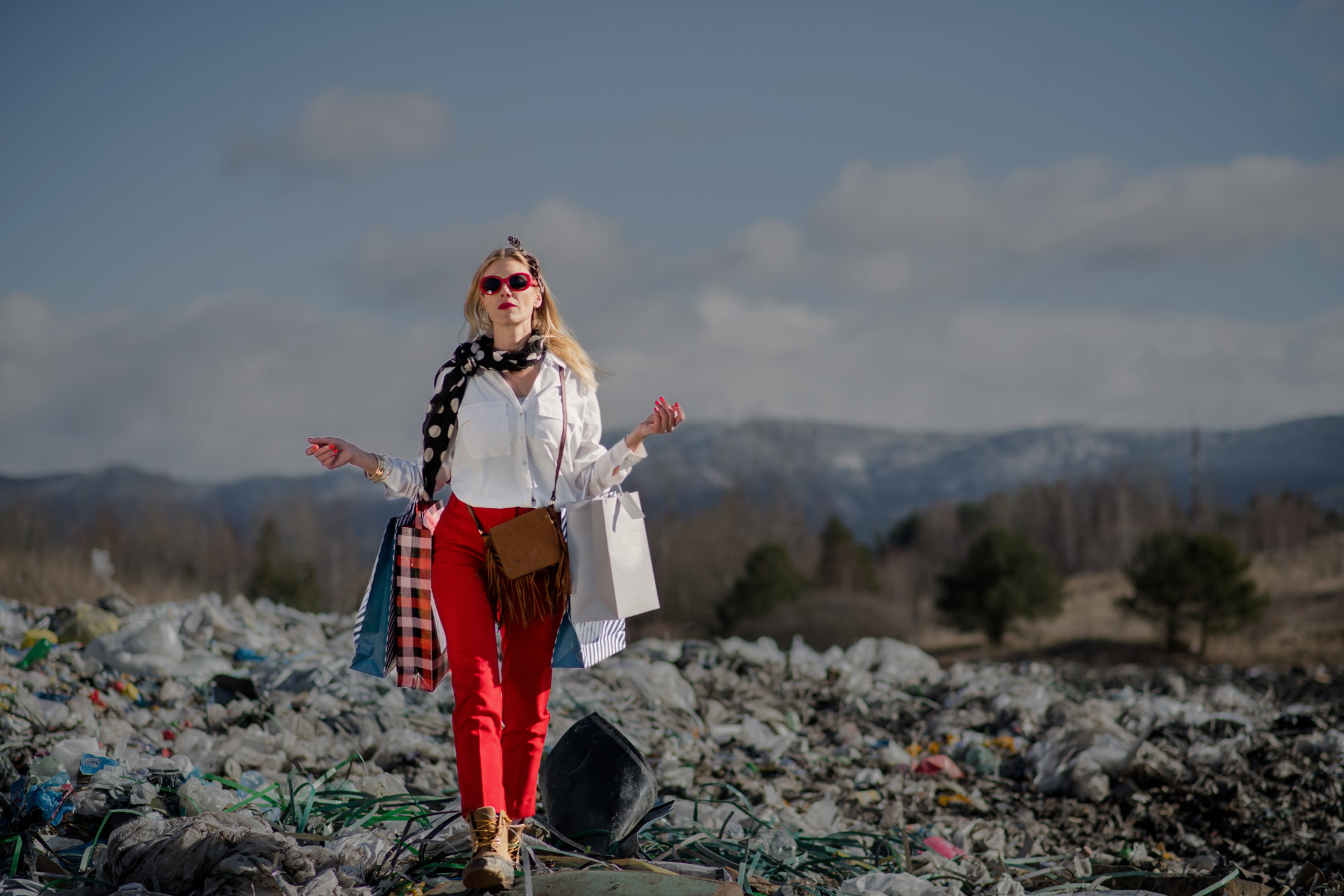Fast fashion has taken the industry by storm in recent years. In a world driven by instant gratification and ever-changing trends, companies can’t help but indulge the public’s preferences. The cheaper, expedited shipping and manufacturing methods made it, so consumers never have to go without. For instance, if you ever find yourself in need of something to wear for a last-minute occasion, you could simply drop by the local mall or have a chic dress with a cool pair of boots shipped in a matter of minutes.
If you’re thinking that sounds too good to be true, that’s because it is. Despite the convenience and adaptability of this business model, its rise has proven to have adverse effects, ethically and environmentally.
It’s no secret that the fashion industry has been under high scrutiny for its lack of sustainability and fair working conditions. However, fast fashion amplifies the controversy even further. Quick production methods and scant prices make for a pernicious combination. These practices inevitably cause the environment, working conditions, and quality of clothing to suffer.
Despite the demand for fast fashion, many clothing brands, such as Everlane and Patagonia, are looking to reverse this trend. Find out about the perils of fast fashion, the benefits of slow fashion, and how to contribute to a brighter future so that you can shop for your favorite outfits guilt-free.
What is Fast Fashion?
Fast fashion is defined by the mass production of current fashion trends at a low cost. This type of clothing is typically low-quality, made from inexpensive fabrics, particularly synthetic fibers. The thought process behind this strategy is fairly straightforward – fast fashion is accessible and affordable; those who are unaware of its effects will see only the benefits.
The fashion industry operates much differently today. In the past, designers annually planned their lines for only four seasons: summer, fall, winter, and spring. With trends constantly shifting, more rapidly than ever before, clothing brands are pressured to keep up. Now, some brands produce over fifty “micro-seasons” a year, meaning they put out new collections weekly. This allows fast fashion stores to keep an extensive stock of clothing and never experience the fear of running out of clothing. In addition, these brands stay up to date on the latest trends to ensure their customers never grow bored of their inventory. It’s hard to ignore the merits of this business model. However, the benefits quickly lose their impact once you’ve seen what happens behind the scenes. This method, while admittedly profitable due to the high volumes, has proven to be highly exploitative. Though fast fashion brands produce cheap clothing, their business model comes at a high cost, which the environment and employees are forced to pay.
The Impact of Fast Fashion on Employees

Simply put, fast fashion presents an ethical dilemma concerning the injustice garment workers must face as a result of poor wages.
In fact, 85% of textile workers earn below the minimum wage, receiving 2 to 6 cents for every piece of clothing. Not to mention, despite most employees working over 60 hours a week, they do not receive overtime pay.
The lack of sufficient compensation for garment workers is a by-product of fast fashion, as brands require their employees to work long hours to produce inventory at a faster rate.
The Environmental Dilemma of Fast Fashion

The fashion industry’s impact on the environment is has been a topic of controversy for decades. The fashion industry is the second-largest polluter in the world, right behind the oil industry. Every year, it seems the planet suffers more and more for the sake of low-quality, rapidly produced clothing.
So, how exactly does fashion affect the environment?
Rapid fashion production inevitably results in an obscene amount of waste – 85% of textiles wind up in dumps each year. In addition, the equivalent of a truckload of clothes is burnt or buried in landfills every second, further increasing the industry’s carbon footprint.
Furthermore, creating textiles is an energy-intensive process that demands an excessive amount of petroleum. In fact, the industry alone is responsible for 10% of global carbon emissions. The release of greenhouse gases (GHG) is overwhelming, as fossil fuel-based electricity is the primary energy source in garment production.
The Benefits of Slow Fashion
As the name suggests, slow fashion is a term to describe the opposite of fast fashion and its detrimental effects. Slow fashion advocates for fair working conditions and eco-friendly practices, ultimately cultivating a more ethical industry.
Slow fashion promotes high-quality clothing at a higher cost – a notion that has been rendered obsolete in recent years due to the rise of fast fashion. These garments are long-lasting and, most importantly, represent a mindful method all brands should adopt.

You might be wondering why anyone would be inclined to support this movement if it means spending more money for clothing you can find at a lower price elsewhere. However, unlike fast fashion, which we have established is composed of low-quality garments, slow fashion presents durable items that will hold up through many uses and circumstances. Furthermore, the enduring elements of such clothing mean that consumers no longer have to purchase more garments to replace those that are poorly made. In this way, when you invest in slow fashion brands, you save money and the welfare of all parties involved.
This concept also prompts consumers to stop and consider whether they truly need to buy a new jacket, dress, sweater – or any other piece of clothing. Often, we have these items in our closets; it’s simply a matter of repurposing or repairing them for future use.
In some instances, our wardrobes are overflowing and we have to accommodate new pieces all the time. In such a crowded closet, it can be all too easy to forget that black denim jacket you purchased last year, causing you to order yet another one online. Slow fashion aims to inspire consumers to make more mindful choices regarding the brands they support and how often to purchase clothing items.
Sustainable Clothing Brands to Support
So, are all clothing brands following the same unethical practices?
Fortunately, the answer is no. In fact, many brands have begun to address such issues and restore peace for the environment, employees, and the fashion industry as a whole. Such wasteful practices have prompted some clothing companies to adopt more sustainable habits and encourage their audience to do the same.
If you want to try on a more sustainable lifestyle, we suggest checking out the following brands that are opening doors for ethical fashion. These companies promote mindful habits and still manage to produce high-quality garments. These brands are dedicated to raising awareness and revolutionizing garment production for the better.
Everlane is a clothing brand that is paving the way for a brighter future. Aiming for transparency, their team is dedicated to educating customers on the importance of making sustainable choices. In addition, they vet potential manufacturers and only work with those that share their standards for the protection of their employees and the planet.
Levi’s are most commonly known for their denim; however, denim production can also be extremely wasteful. Unwilling to contribute to the perils of the industry, Levi’s is devoted to shrinking its carbon footprint through innovative fabrics, such as cottonized hemp, that require fewer resources to produce. In addition, the brand is aiming to 100% sustainably source their cotton and reduce their greenhouse gas emissions by 40%.
Girlfriend Collective presents a collection of affordable loungewear that is made from recycled waste, such as plastic bottles and fishing nets. Their team has also adopted a low-impact dye process to protect factory workers and the environment. Additionally, they advocate for workers’ rights and ensure employees receive fair wages and reasonable hours.
Adidas is raising the bar for responsible fashion. Their primary objective is to reduce plastic waste. Their partnership with the environmental organization Parley for the Oceans is only one example of their efforts. They also use recycled plastic debris in their designs and are committed to eliminating virgin plastic from their pieces.
Last but certainly not least is Reformation, another brand on its way to becoming a climate-positive company by using regenerative fibers and carbon offsets to counteract the existing greenhouse gas emissions. They are also supporters of California’s Garment Worker Protection Act SB62, which promotes acceptable working conditions for employees.
So, is it time to quit fast fashion? At the very least, next time you revamp your wardrobe, perhaps consider a few timeless staples you’ll wear season after season, rather than loading your cart with cool pieces that are out of style before you wear them twice and choose brands that are making a conscious effort to reduce their footprint.
Also read – The Evolution of Diversity and Inclusivity in Bra Sizing
Insights in your inbox
Sign up to receive our latest news and insights

Thank you!
we’ll keep you updated




